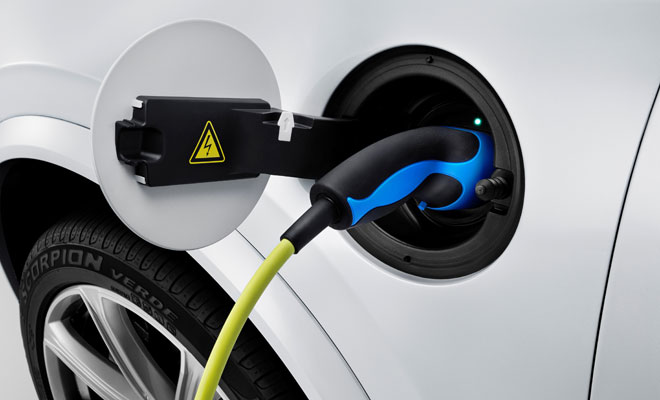by Lem Bingley 
In April the plug-in car grant will receive its biggest revamp since its inception in January 2011. The government sweetener, which contributes 25% of the purchase price to qualifying plug-in cars, will be raised to an even more tempting 35% from 1 April 2015.
The majority of electric car buyers won’t get a taste, however, as the contribution will remain capped at £5,000 – meaning the car attached to the plug has to have a retail price less than £20,000 for the government’s new level of generosity to make a difference.
Currently, from among the two-dozen or so models that qualify for the grant, only two – Renault’s Zoe and Smart’s ForTwo ED – fall into the new sweet spot. And even then there are caveats. To get a Zoe under 20 grand you have to tolerate the ongoing cost of monthly battery leasing. And similarly, in the Smart’s case, you’ll need to opt for “Sale&Care” battery hire rather than outright purchase to see a difference.

That said, the benefit can be big – according to my inexpert calculator prodding a ForTwo ED Sale&Care should be more than £1,000 cheaper from April, at about £11,243 plus battery rental. The open-top electric ForTwo Cabrio should be around £640 cheaper at £12,743 plus rental.
Renault has helpfully calculated that an entry-level Zoe Expression will be £552 cheaper than currently, while a buyer of a better-equipped Dynamique version will save £152.
More significant are impending changes to the structure of the grant, which is due to run until 50,000 grants have been awarded – we’re half way there at present – or until 2017.

OLEV, the Office for Low Emission Vehicles that runs the grant, has announced the creation of three new bands into which plug-in cars will henceforth slot.
Category 1 cars must have a CO2 rating below 50g/km and a zero-emissions range of 70 miles or more. Category 2 plug-in cars must still fall below 50g/km but can provide a shorter ZE range of between 10 and 69 miles. And lastly cars with emissions between 50 and 75g/km and a ZE range of at least 20 miles fall into Category 3.
There are of course some vehicles with a plug that fall outside these limits – a Porsche 918 may boast a 72g/km rating but with its 18-mile electric range it would currently flunk the Category 3 test.

Among the cars currently eligible for the grant, all of the pure battery electric vehicles should slot straight into Category 1. That includes the standard BMW i3, the Ford Focus Electric, Kia Soul EV, Mercedes B-Class ED, Mitsubishi i-Miev, Nissan Leaf and e-NV200 Combi, Renault Zoe, Smart ForTwo ED, Tesla Model S, Volkswagen e-Up and e-Golf, plus the semi-mythical Citroen C-Zero and Peugeot iOn.
OLEV hasn’t yet confirmed which cars belong where, but the range-extender version of the BMW i3 also seems set to join Category 1, courtesy of its 13g/km rating and 100-mile battery range. It’s the only car with an engine to qualify for the cleanest category.
Most of the rest of today’s plug-in cars should fall neatly into Category 2. The Audi A3 e-tron, BMW i8, Mitsubishi Outlander PHEV, Toyota Prius Plug-in, Vauxhall Ampera, Volkswagen Golf GTE and Volvo V60 PHEV all provide CO2 scores below 50g/km combined with an electric range beyond 20 miles – albeit just 23 miles in the case of the i8.

Finally, Category 3 looks set to embrace the lardy likes of the Mercedes-Benz S500 Plug-in Hybrid (which scrapes within the range requirement) and Porsche Panamera S E-Hybrid.
For now, OLEV is not differentiating between the different categories. All will qualify for the same 35% grant, capped at £5,000, from April. But in May the government agency will begin a consultation that will surely meander its way towards trimming the benefits offered to cars in Categories 2 and 3.
Handing taxpayer cash to buyers of Panameras and S-Class limos never seemed like a vote-winner among hard-working families, so don’t be surprised if Category 3 cars get booted out of the plug-in car grant altogether before too long.

Plug-in car grant to get bigger but more picky
14 February 2015
Read more about: electric cars incentives plug-in cars



